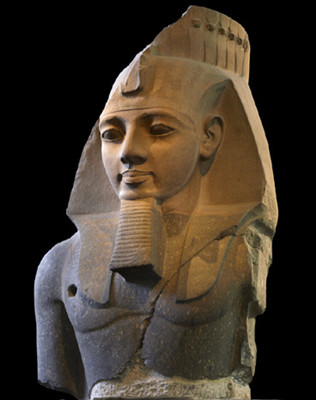"My name is Ozymandias, King of Kings:Look on my works, ye mighty, and despair!"
吾乃奧茲曼迪雅茲,萬王之王,功業蓋世,強者折服!
That was Shelley, writing in 1818 with a poetic vision inspired by the monumental figure here in the British Museum, whose serenely commanding face is looking down at me from a very great height.
1818年,大英博物館的一尊雕像激發了詩人帕西比希雪萊的靈感,讓他寫下了這句最廣為流傳的詩句。
Shelley's Ozymandias is our Ramesses II, king of Egypt around 1270 BC, and his giant head dominates this space from a gallery plinth...although it would once have been even higher.
雪萊提到的奧茲曼迪雅茲騎術就是我們的拉美西斯二世,公元前1270年埃及的統治者。他表情平靜莊嚴,巨大的頭顱從高處俯視游客,氣壓全場。
"It's difficult for us to conceive now, with our air tools and electrical ways of cutting stone,
“即使憑借我們現有切割石頭空氣工具和電子方法的技術,也很難有這樣的奇思妙想。
quite what an extraordinary achievement, not simply the scale and weight of a sculpture of this size is, but also the degree of finish."
這是相當非凡的成就,不僅僅是雕塑作品的規模和重量的,也體現出了它卓越的完成度。”
"There's no way of looking at this man and seeing him as a failure.
“這個男人的光輝令人無法直視,而且他從未嘗過敗績。
He absolutely deserves the epithet 'the Great', he really was."
他絕對值得配得上“偉人”的封號,他是實至名歸。”
A history of the world.
世界歷史,
In a hundred objects.
百件藏品,
The Statue of Ramesses II,aproximatelly 1250 BC made of Granite;from Thebes,in Egypt.
公元前1250年發現于埃及古城底比斯的法老拉美西斯二世花崗巖雕像。












